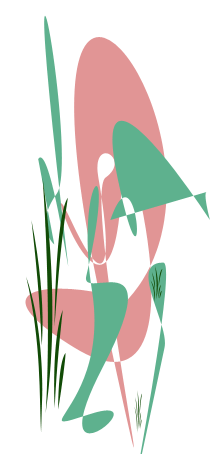
The
University of Western Ontario
Department of French
University College 138B
FR 002~002: Supplément de la grammaire
Chapitre 1
This week we will look at some different sentence constructions using the verb être (to be). This verb could perhaps be described as the single most important verb in french for those learning french as a second language. The verb être, when properly mastered, will allow you to express a great deal in French.You will recall that we saw the verb être (to be) in its full paradigm in the chapitre préliminaire. It is a fully irregular verb that we have reproduced for you here along with the verb connaître from which comes the expression you have seen in chapitre 1, Tu connais?:
| être
(irregular verbs) (to be) |
connaître (to know of, be familiar with) |
|
je suis |
je connais tu connais il/elle/on connaît nous connaissons vous connaissez ils/elles connaissent |
Also in chapitre préliminaire, we learned the expressions C'est and Ce sont (in combination with the indefinite articles un, une, and des) for identifying things that are there before us. Remember the pronoun Ce is a demonstrative pronoun and as such is said to be deictic ("pointing to" something that is proximate). This proximate relationship can be either real OR perceived. In the case of the real proximate relationship the speaker is able to physically point out the item or items in question (this is a chair, these are some students). Whereas the perceived proximate relationship is established in the context of a conversation or discussion as the item that was just or very recently mentioned :
| Real | (pointing to the item in question) C'est une chaise.
This is a chair. |
(Pointing out the group in question.) Ce sont des
étudiants. These are some students |
| Perceived | (said about a women previously mentioned)
C'est une femme forte agréable. This is a very kind woman. |
(Said about the previously mentioned students) Ce sont des étudiants enthousiastes. These are some enthusiastic/well motivated students. |
And the interrogative expressions Qu'est-ce que c'est and Qui est-ce, to identify an object or a person respectively:
| (Que = what)Qu'est-ce que c'est? What is it? | (Qui = who)Qui est-ce? Who is it? |
Chapitre 1 is an introduction to the most commonly used constructions or expressions using the verb être. These are expressing a persons profession, nationality, physical traits (tall, short, big, little, blond, black or red hair, for example) and character traits (happy, sad, kind, unkind, selfish, selfless, active, athletic, lazy for example).
 Adjectival Phrases
(nationality, profession and descriptions)
Adjectival Phrases
(nationality, profession and descriptions)
In the examples below the verb être is used with an adjective to express someone's profession, nationality or charateristics. One cardinal rule that students must always remember when using adjectives: adjectives (like subject pronouns and articles) must always agree in gender and number with the noun that they modify! In the examples below that noun is always the subject that we are describing.
|
Nationalité
|
Profession
|
Physical features
|
Personality traits |
|
• Voilà Léopold. Il est afric-ain-Ø. • Voici Georgette. Elle est afric-ain-e. |
• Léopold est act-eur-Ø. • Georgette est actr-ice-Ø.
|
• Léopold est grand-Ø. • Georgette est petit-e. *NB. One can also use: C' est un blond. EX: Tu sais Nicolas? C'est le blond qui travail au ciné.
|
• Léopold est calme-Ø. • Georgette est calme-Ø. |
![]() GENDER:
Looking at the coloured particles that are broken out of the adjective
forms above you will recognise the markers of gender common to all of
these constructions: -Ø =masc. sing.,
-e = fem. sing. In the case of nationality
or profession, the forms are first marked to indicate the words
function in the sentence: nationality or profession (X+ain
= "a person of nationality X",
Y+ eur = "the
person who doesY"), secondly the gender marker is added (-Ø
=masc. sing., -e = fem. sing, or as seems
to be more often the case an irregular form such as -ice-Ø
or -ne results). You will likewise notice
with personality traits that there a numerous irregular forms. These will
have to be memorised but if you are careful to look for groups and catergorise
forms accordingly you can still find some regular patterns even amongst
the irregular forms.
GENDER:
Looking at the coloured particles that are broken out of the adjective
forms above you will recognise the markers of gender common to all of
these constructions: -Ø =masc. sing.,
-e = fem. sing. In the case of nationality
or profession, the forms are first marked to indicate the words
function in the sentence: nationality or profession (X+ain
= "a person of nationality X",
Y+ eur = "the
person who doesY"), secondly the gender marker is added (-Ø
=masc. sing., -e = fem. sing, or as seems
to be more often the case an irregular form such as -ice-Ø
or -ne results). You will likewise notice
with personality traits that there a numerous irregular forms. These will
have to be memorised but if you are careful to look for groups and catergorise
forms accordingly you can still find some regular patterns even amongst
the irregular forms.
![]() NUMBER:
Marking gender (singular or plural) is as simple as adding -Ø
(no marker) for the singular and -s
for the plural after the
form that reflects the correct gender is selected.
NUMBER:
Marking gender (singular or plural) is as simple as adding -Ø
(no marker) for the singular and -s
for the plural after the
form that reflects the correct gender is selected.
•Ils sont américan-s [-Ø(masculin marker) -s(plural marker)] •Elles sont américain-es. [-e(feminin marker) -s(plural marker)]
 Noun Phrases (nationality
and profession)
Noun Phrases (nationality
and profession)
We have learned that in adjectival phrases (particularly with nationalities and professions), the article is never used in French (il est un acteur, for example, is NOT an acceptable sentence). However, there are equivalent noun phrases that do use articles but these constructions must be formed using the demonstrative pronoun Ce. These forms are discussed on p.33 of chapitre 1.
|
Nationalité
|
Profession
|
Physical features |
|
• Il est africain. —› C'est
un africain • Elle est africaine. —› C'est
une africaine. |
• Il est acteur. —› C'est
un acteur • Elle est actrice. —› C'est
une actrice. *This is a form not widely used. |
*NB: One can also use: C'
est un blond. EX: Tu sais Nicolas? C'est le blond qui travail au ciné. |
![]() Note once again
that the cardinal rule applies.
Articles and adjectives (like subject pronouns
and professions) must always agree in gender and number with the
noun that they modify!
Note once again
that the cardinal rule applies.
Articles and adjectives (like subject pronouns
and professions) must always agree in gender and number with the
noun that they modify!
![]() Another rule or
pattern to be observed: a noun or a subject pronoun
used with the verb être must be followed by an adjective
which also means NO ARTICLE. Iinversely, the noun form (thus with and
article ) must only be used with the demonstrative pronoun form
C'est or
Ce sont .
Another rule or
pattern to be observed: a noun or a subject pronoun
used with the verb être must be followed by an adjective
which also means NO ARTICLE. Iinversely, the noun form (thus with and
article ) must only be used with the demonstrative pronoun form
C'est or
Ce sont .
